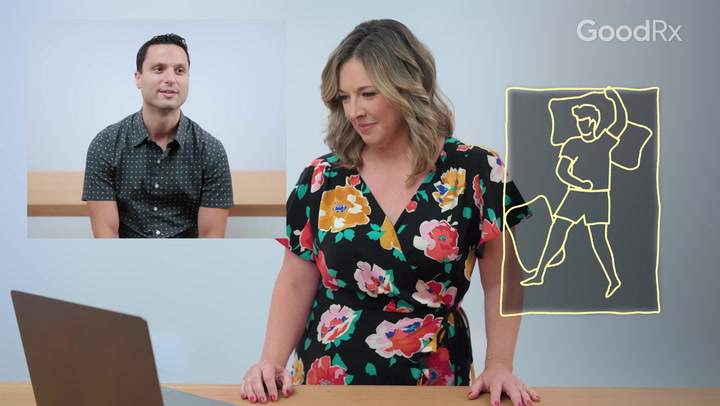
How Long Should a Nap Be? Experts Discuss the Ideal Nap Time
Key takeaways:
The ideal nap length is 15 to 20 minutes, according to experts. If you nap for longer periods, you may enter deep sleep, which can leave you feeling groggy.
Napping may increase energy levels and boost productivity.
If you have insomnia, napping might not be a good choice.
Luxurious midday snoozing isn’t just for toddlers. In fact, as many as one-third of Americans report sleeping while the sun still shines.
If done wrong, napping can be a disaster for your sleep schedule. But, when done right, it can be the perfect pick-me-up, possibly increasing productivity and energy levels. So how long should a nap be to get the best results? Here’s what science says.
What is the best nap length?
Naps should be short enough to avoid deep sleep and long enough to reap the benefits of rest. Studies have found that the most beneficial naps are around 15 minutes and no more than 30 minutes.
Search and compare options
As tempting as it can be to let yourself fall into deep slumber midday, this will only hurt your sleep schedule and post-nap performance. “When it's sleep, you want it to be continuous,” says Rajkumar Dasgupta, assistant professor of clinical medicine at the University of Southern California Keck School of Medicine.
But according to Dasgupta, with a nap, you want the opposite. Napping longer than 30 minutes can put you at risk for sleep inertia, a temporary feeling of grogginess or disorientation after waking up. It can affect your reaction time, alertness, and mood. Most instances of sleep inertia last 30 to 60 minutes. So if you nap too long, you may need time to recover. On the other hand, napping for less than 5 minutes likely won't provide enough rest to notice any benefits.
What makes a 15- to 20-minute nap ideal? It all comes down to your sleep cycle.
People sleep in cycles that can be broken up into two main stages: REM and non-REM sleep. A cycle starts with non-REM sleep, which has three phases. The first two light sleep phases (N1 and N2) last for about 40 to 70 minutes before you transition to the third phase of deep sleep (N3). So the best nap length to boost your energy should stay in the N1 and N2 phases of light sleep.
What are the benefits of napping?
There's a reason public places, from airports to corporate offices, designate space for a midday doze. Napping, when done correctly, has several science-backed benefits.
Increases energy
A quick snooze may reduce fatigue and boost your energy. In one study, people reported significantly less sleepiness after a 30-minute nap.
Read more like this
Explore these related articles, suggested for readers like you.
Relieves stress
Good, sufficient sleep can help alleviate stress. And studies show that a good nap may reduce stress, too. That's good news because psychological stress can affect energy levels, concentration, and mood. So napping 15 to 20 minutes could have a noticeable impact on your quality of life.
Improves memory
Napping might help you form memories. One study showed that naps may improve associative memory. Study participants were more likely to remember word pairs (two random words paired together) after taking a nap than after watching a DVD. Remembering how concepts are linked is a type of associative memory. You use this skill to put a name with a face. Several other studies found similar associations between naps and improved memory.
Boosts learning
Better learning ability can be a big perk of napping. This is especially true of episodic learning, a type of learning by remembering.
Scientists aren't exactly sure why napping may have these benefits. But some think that non-REM sleep (the kind associated with short afternoon naps) increases activity in the hippocampus, the area of the brain responsible for processing and retrieving memories.
Improves workplace performance
With more energy, less stress, and improved learning, it's not surprising that naps may boost your performance at work or school. Researchers found that napping improved alertness and cognitive function in a group of athletes.
That might explain why many companies use naps to increase employees' productivity. Research shows that planned napping can help workers maintain focus and alertness throughout the day. Employees may feel less frazzled with less stress and more attention, making them more productive and less likely to make mistakes.
Are there any harms of napping?
There are no serious risks associated with napping. But it can have some unwanted effects.
Remember, longer naps can have the opposite of their intended effect. Instead of boosting your energy, they may cause more grogginess and diminish performance.
And napping for too long or too often can make it hard to fall or stay asleep at night. That's because long or frequent naps lower the homeostatic sleep drive that encourages you to fall asleep. "This is especially harmful to people who experience insomnia, the inability to fall asleep at night," says Dasgupta. "While these people may be tempted to nap, it's best they store up that drive in hopes of spending it on a good night's sleep."
You might have heard that napping, especially long naps, is associated with a shorter lifespan. But research suggests that nighttime sleep can affect this risk. Long naps were only harmful to heart health and longevity in those who slept for more than six hours per night. Researchers aren’t clear about why lengthy naps can be harmful. Though some think a long snooze is linked to higher levels of inflammation.
People who nap more in spite of adequate nighttime sleep may have undiagnosed health conditions, such as diabetes and depression, causing them to sleep more. Some people who nap may not sleep well at night, which can be detrimental to your overall health.
Pay close attention to your reason for napping. Is it an occasional tool to help you refresh? Or are you napping because you're exhausted, despite sleeping at night? If it's the latter, it's best to discuss this with your healthcare provider.
What about children and older adults?
Napping looks different depending on your age. Napping is especially important for children and should not be restricted. For example, infants (up to age 1) may take up to four naps daily, lasting up to 2 hours. Children (ages 3 to 5) need 10 to 13 hours of daily sleep. So they may nap as needed to meet this amount of sleep. The National Sleep Foundation has detailed recommendations to ensure that your child gets adequate sleep.
As for older adults, they should be wary of taking long midday naps. Researchers have linked them with an increased risk of diabetes, heart disease, and depression. If you, or an older adult you know, needs long midday naps, it's best to discuss this with a healthcare provider.
How to take the perfect nap
There is an art to taking the perfect nap — one that doesn't leave you more tired or ruin your night's sleep. Here are some expert tips for napping.
Try to nap between 12PM and 2PM. The best nap time has a lot to do with your circadian rhythm. Your circadian rhythm makes you sleepy twice during the day — once around noon and again at around 9 or 10 PM. “If you're going to take a power nap, you might as well do it when your circadian rhythm tells you 'hey it's alright to be a little tired,' so hit that nap around noon to 2PM,” says Dasgupta. Many different cultures already respond to this natural mid-afternoon sleepiness through the practice of afternoon naps.
Don't forget to set an alarm. In order to get that ideal nap length, you'll need an alarm. Make sure you're only napping for 30 minutes max to avoid deep sleep.
Find a cool, quiet place to nap. The quality of a nap is affected by things like room temperature and noise. Experts recommend sleeping in a quiet, relaxing room where the temperature is set at a comfortable level.
The bottom line
Napping may offer real benefits, including increased productivity and decreased stress. However, how and when you nap makes a difference. The best nap length is 15 to 20 minutes, and it will be most effective in the afternoon.
If you experience insomnia, it might be best to hold off on a midday snooze. Reach out to your healthcare provider if you're excessively sleepy during the day despite a full night's sleep.
Why trust our experts?



References
American Psychological Association. (2022). How stress affects your health.
Antipolis, S. (2020). Long naps may be bad for health. European Society of Cardiology.
Brooks, A., et al. (2006). A brief afternoon nap following nocturnal sleep restriction: Which nap duration is most recuperative? Sleep.
Centers for Disease Control and Prevention. (2020). NIOSH training for nurses on shift work and long work hours.
Centers for Disease Control and Prevention. (2022). Tips for better sleep.
Cross, N., et al. (2015). Napping in older people 'at risk' of dementia: Relationships with depression, cognition, medical burden and sleep quality. Journal of Sleep Research.
Daaloul, H., et al. (2019). Effects of napping on alertness, cognitive, and physical outcomes of karate athletes. Medicine and Science in Sports and Exercise.
Gillberg, M., et al. (1996). The effects of a short daytime nap after restricted night sleep. Sleep.
Hilditch, C. J., et al. (2016). A 30-minute, but not a 10-minute nighttime nap is associated with sleep inertia. Sleep.
Hilditch, C. J., et al. (2016). Time to wake up: Reactive countermeasures to sleep inertia. Industrial Health.
Hirshkowitz, M., et al. (2015). National Sleep Foundation's sleep time duration recommendations: Methodology and results summary. Sleep Health.
Kaiser Permanente. (2022). Stages of sleep.
Lau, H., et al. (2010). Daytime napping: Effects on human direct associative and relational memory. Neurobiology of Learning and Memory.
Levi, R. (2022). Types of naps. The Sleep Doctor.
Mander, B. A., et al. (2011). Wake deterioration and sleep restoration of human learning. Current Biology.
National Institute of Neurological Disorders and Stroke. (2023). Brain basics: Understanding sleep.
Ong, J. L., et al. (2020). A daytime nap restores hippocampal function and improves declarative learning. Sleep.
Oriyama, S., et al. (2014). Effects of two 15-min naps on the subjective sleepiness, fatigue and heart rate variability of night shift nurses. Industrial Health.
Stang, A., et al. (2012). Midday naps and the risk of coronary artery disease: Results of the Heinz Nixdorf Recall Study. Sleep.
Studte, S., et al. (2015). Nap sleep preserves associative but not item memory performance. Neurology of Learning and Memory.
Takahashi, M. (2012). Prioritizing sleep for healthy work schedules. Journal of Physiological Anthropology.
Taylor, P. (2009). Nap time. Pew Research Center.
Xu, Q., et al. (2010). Day napping and short night sleeping are associated with higher risk of diabetes in older adults. Diabetes Care.





























